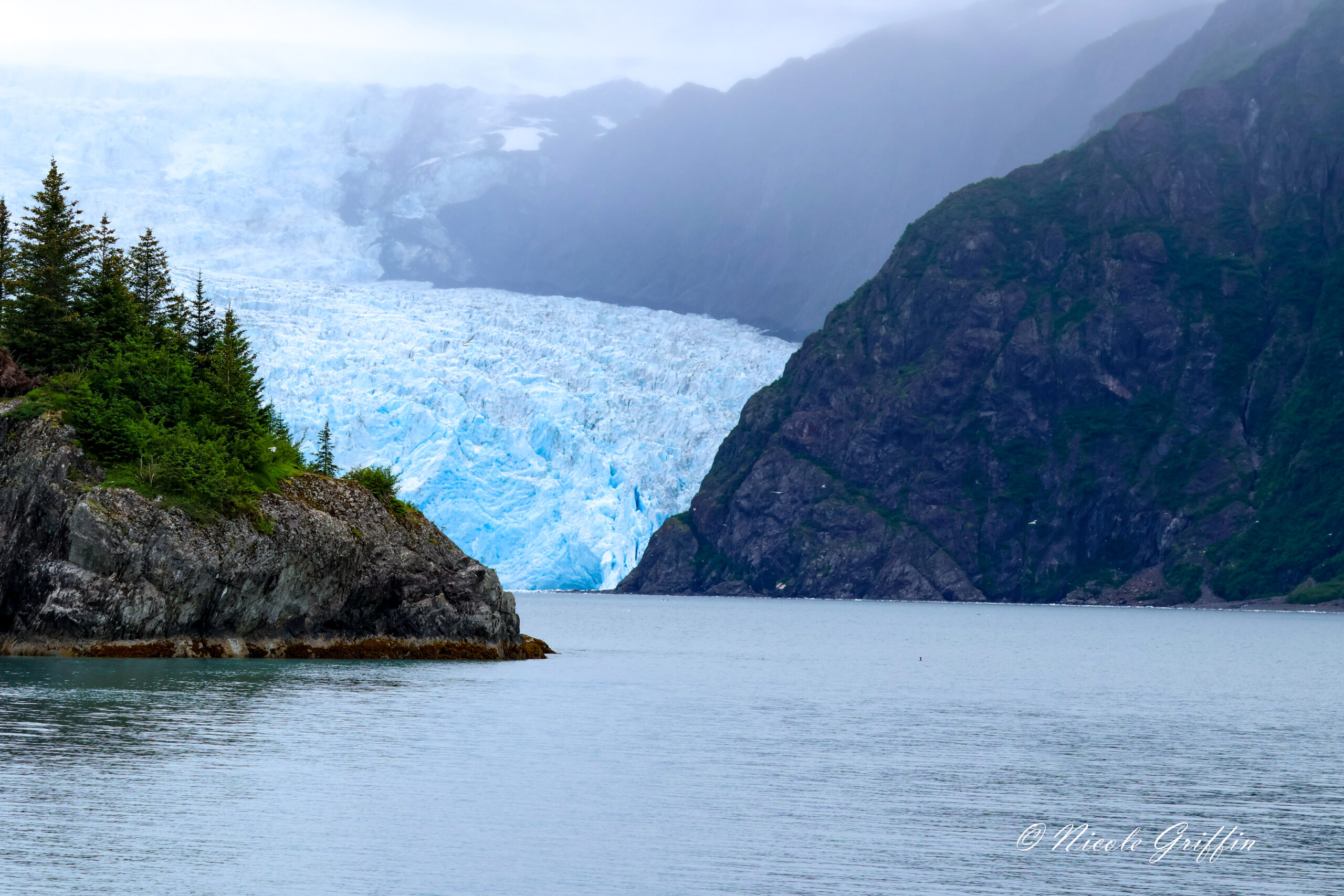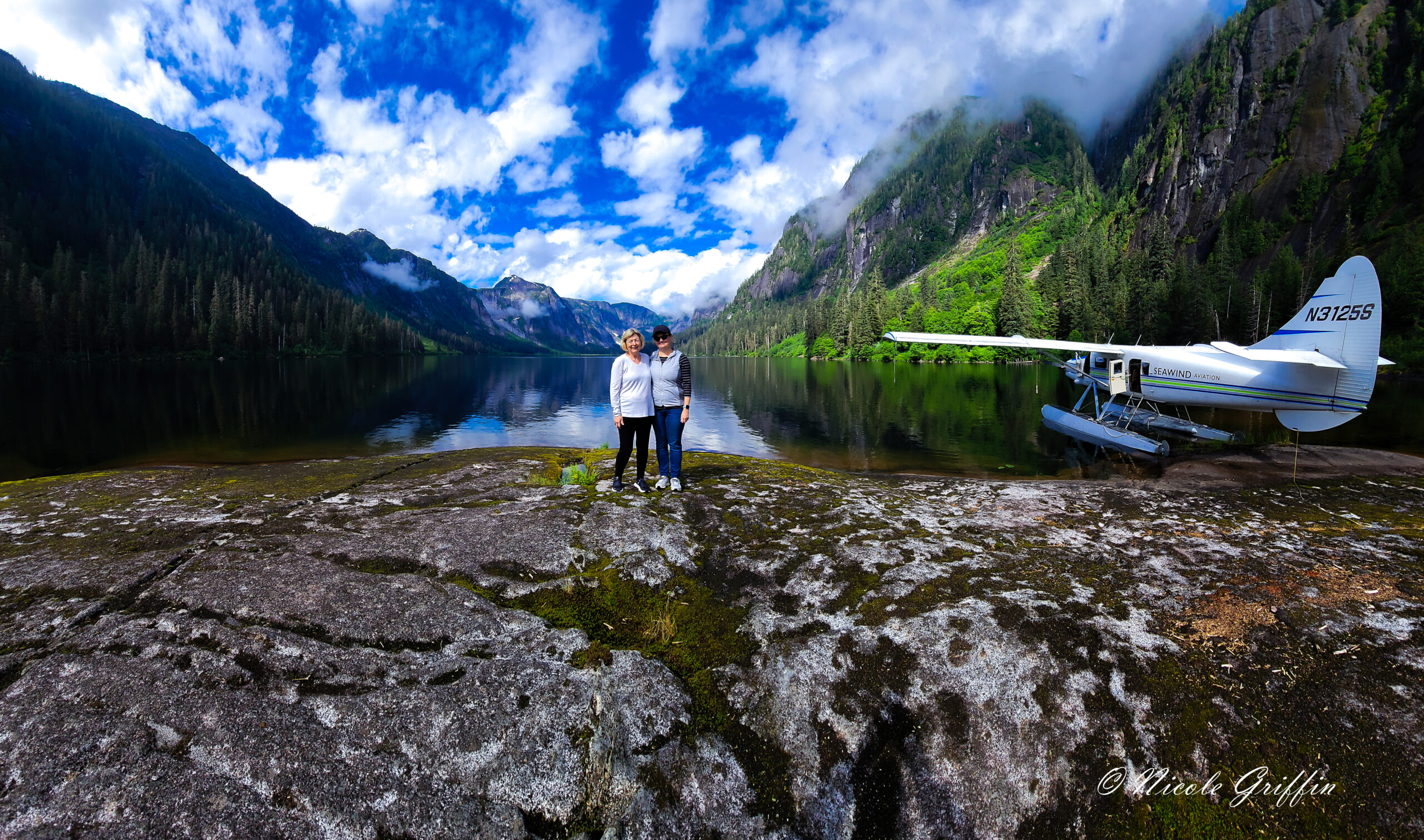When people ask me how my trip to Alaska was, my quick, flippant response is, “a lot of glaciers and whales.” Which may sound as if I’m being dismissive of the experience, but the truth is, the glaciers and whales were both amazing. More to follow on the whales in my next post. Today, we’re talking about glaciers.
Over the course of my seven-day journey, I saw a total of five glaciers (probably more if you count some fleeting glimpses): Mendenhall, Herbert, Hubbard, Holgate, and Bear. Honestly, I could not get enough of them. We got to see them from a few different vantage points: from the air (Mendenhall), standing on top (Herbert), and from the sea (Hubbard, Holgate, and Bear).
I got some amazing photos, but pictures cannot do justice to the experience of being up close to these massive walls of snow and ice—the radiating cold, the aqua gleam in the sun, the groaning and cracking when they calve.
According to the National Park Service, glaciers cover 23,000 square miles of Alaska. Only some of these are tidewater glaciers, which terminate at the sea, and from a boat, you’re only seeing a small part of the total mass the glacier. Behind the sea terminus and out of view from the water, the glacier may stretch for miles—in the case of the Hubbard Glacier, 76 miles, all the way to Mt Logan in Canada’s Yukon Territory.
Prior to this trip, I had thought of glaciers as massive but stationary hunks of ice, because I’d previously seen only tiny remains of glaciers in places like the Alps and Montana’s Glacier National Park. I learned on this trip how much glaciers move. Snow falls in the mountains, compacts and compacts under its own weight, and begins a sometimes centuries-long journey from mountaintop to sea.
Mendenhall and Herbert Glaciers
Mendenhall Glacier is easily accessible from Juneau, and is 13 miles long, terminating at Mendenhall Lake. We didn’t actually visit this one, but we saw it from the helicopter en route to a lesser-known glacier in the Juneau Ice Field, Herbert Glacier.

Glaciers are formed when the amount of annual snowfall exceeds the amount of annual snowmelt. Due to climate change, many glaciers are in retreat, which happens when the melting exceeds the snowfall. This is the case for most of Alaska’s glaciers.
Both glaciers are retreating and melting quickly. In the case of Mendenhall, the melt has proven so rapid that Juneau has seen devastating floods in recent years known as glacial outburst floods (or, more colorfully jokulhlaup, in Icelandic). These happen when icemelt pools under the glacier until the pressure suddenly becomes too much and actually lifts the glacier up, providing a release for the water.
In July 2011, an estimated 10 billion gallons of water burst from the glacier over the course of three days. The phenomenon has repeated 30 times since then. In July 2023, shortly after we were there, it released its most devastating flood yet.
Herbert Glacier is retreating with far less drama, and I have to say it was still an impressive hunk of ice to fly over and land on in a helicopter.

Up close the glacier’s surface is rough and riddled with pockmarks and electric blue crevasses.

In places, it is even dirty, laden with hunks of rock ranging from gravel to boulders picked up from the mountains it carved on its journey.


Hubbard Glacier
Hubbard Glacier was another experience altogether. Hubbard was a stop on our cruise—not a port call, because there was nowhere to make port. But overnight on our last full day at sea, our ship made a turn north into Yakutat Bay, then proceeded further down the ominously named Disenchantment Bay. I awoke that morning to the sight of chunks of ice drifting by. By the time we had gotten our morning coffee, the ship was pulling in viewing range of the mighty glacier.
Hubbard Glacier is nearly 7 miles wide and 350 feet tall at its terminus in Disenchantment Bay. It extends 76 miles inland to Mt Logan in Canada’s Yukon Territory—an icefield larger than the state of Rhode Island.

You know all those glacier videos you see online or in National Geographic documentaries from Greenland or Antarctica? The ones where large icebergs break off of glaciers, demonstrating the unrelenting damage wrought by climate change? Perfectly true in those cases—glacier mass is shrinking worldwide, including in Alaska. But Hubbard is defying climate change and advancing rather than retreating.
Which means that there was no reason to feel sorrow as the sun came up and the glacier began to grunt and groan, a sign that she was about to calve!

“Calving” is the name of the process by which masses of glacier detach themselves and float away as icebergs, or smaller chunks, known as “bergy bits” or “growlers.” The ceaseless movement of marine-terminating glaciers from mountain to sea means that even an advancing glacier drops calves.
We were fortunate in the weather conditions, which allowed our ship to approach within half a mile of the glacier—the closest larger ships can get—before the captain set the ship on a slow turn to the starboard, allowing the ship to spin so that all side of the ship could get a good view. Or you could do what we did, and run back and forth between port and starboard sides so that for the couple of hours we were there, Hubbard was never out of our view.

We saw dozens of calvings that day, mostly little ones. I’ve had a lot of amazing days in my two decades of traveling the world, and the only day that topped this one was my safari in Maasi Mara in 2013. The overwhelming scale of Hubbard was phenomenal enough up close, and it became even more so when your realized that the ice you were seeing break off into the ocean was completing a journey that began in the Yukon about 500 years before.
Holgate and Bear Glaciers
After we disembarked in Seward, we squeezed in one last excursion to Kenai Fjords National Park through Kenai Fjord Tours. I’ll have a lot more to say about this excursion in my wildlife post, but today I’ll focus on the two glaciers.
I hesitate to say that Holgate and Bear were a bit of a let-down after Hubbard. We were in a much smaller boat after all, which let us get a lot closer to Holgate. (Bear we just passed by without stopping.)

They were smaller and not actively calving like Hubbard had been. But if Holgate had been the only glacier I’d seen on the trip, it would still have been a spectacular experience.


Holgate too is advancing glacier that does calve; unlike Hubbard, it’s only 5 miles long. Not far to the east, Bear Glacier is retreating. Weird how that works, isn’t it?
Such was my glacier experience in Alaska, and to be honest, it has left me craving more travel to frigid climes! I loved my trip north of the Arctic Circle in Norway in 2019, and now with a second spectacular northern adventure under my belt, I’m contemplating Greenland and Antarctica. And Svalbard, Norway. And Tierra del Fuego. These trips would probably not be very bougie, unless taken from the safety of a cruise ship (which Antarctica have to be), but there is something so spectacular in the unspoiled ruggedness of these places.

previous posts on alaska
still to come
- all about the wildlife (especially whales!)








